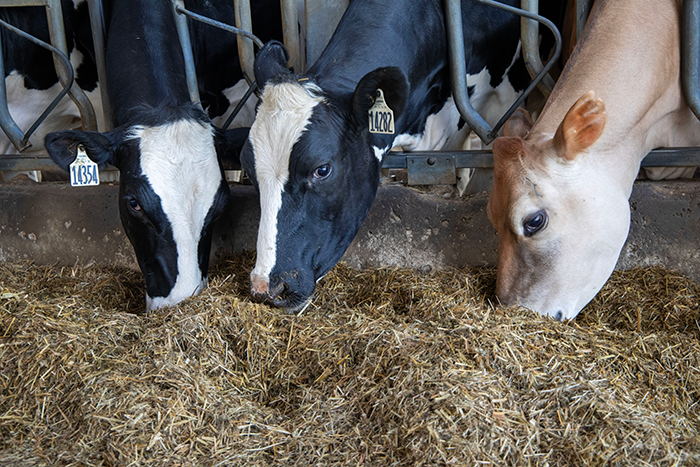A cheesy ode to forage production |
| By Amber Friedrichsen, Managing Editor |
|
|
 American dairy consumption is having somewhat of a renaissance with the latest data boasting the highest levels since 1959 at 661 pounds per capita. While consumer trends and grocery shopping habits are largely responsible for greater demand, forages certainly contribute to the supply side of the equation. As fluid milk consumption continues to dip, the climb in per capita dairy consumption is largely attributed to greater intake of the big three — cheese, butter, and yogurt. Cheese consumption in 2023 topped the charts with a record 40.2 pounds per person. Similarly, butter consumption was the highest it’s been in nearly six decades at 6.5 pounds per person. Other dairy product categories also exhibited significant growth on a percentage basis, including dry whey, cottage cheese, and nonfat dry milk and skim milk powder. All that is to say Americans are eating their dairy more so than drinking it — and producers know it. Over the years, many farmers have responded to this demand shift by switching their focus from achieving bigger milk volumes to capturing better milk components from their herds. Including more forage in a balanced ration can positively impact milk components; however, more forage means more structural fiber, which can lead cows to spend more time at the feedbunk despite having a smaller feed intake. Therefore, the emphasis should be — and often is — on feeding more high-quality forages to lactating cows. Of course, the way these forages are managed in the field, harvested, processed, and stored plays a role in better fat and protein percentages, too. In a recent conversation with Jim Salfer at the University of Minnesota, the extension dairy educator purported that, yes, herd genetics and advances in animal health have certainly contributed to higher milk components, but much credit must be given to better forage practices as well. Looking back, Salfer suggested that dairy farmers have taken strides to prioritize forage management on their farms over the past few decades. This includes planting improved varieties of alfalfa and corn for silage, being more efficient about harvest and storage, and determining ways to optimize forage inclusion rates in their rations. Experimenting with alternative forages and exploring the addition of annual species in their crop rotations has also proven beneficial for some producers, as well as their bottom lines. Cropping technology has taken these good intentions even further, whether it be in the form of reduced-lignin and disease-resistant seed genetics, forage quality preservatives, or precision farming and modern equipment. For example, Salfer recalled a time when dairymen chopped corn silage with a single-row chopper head, resulting in a long, tedious harvest that prolonged the time it took to get silage into storage. Once forage is cut, time is the ultimate enemy, and the only direction forage quality can go is down. Compared to Salfer’s single-row chopper head, today’s machinery enables harvest to get underway in a fraction of the time, mitigating the potential for forage quality to decline. This, followed by more efficient unloading, packing and/or bagging, and covering at the storage site, has streamlined on-farm forage production and subsequent feedout. In addition to dairy farmers themselves, the teams they surround themselves with to create and implement forage programs must be acknowledged as well. Agronomists, nutritionists, custom harvesting crews, and farm employees all have skin in the forage game. This overview of forage’s impact on the dairy industry is in no means in-depth or all-encompassing. There is so much more that could be said about the agronomic, nutritional, and economical benefits that good forages bring to the farming table, as well as the scientists, specialists, and consultants who promote them — not to mention their consumers, the cows that eat them. With that said, every block of cheese, stick of butter, and container of cottage cheese would fail to find its way to the grocery store shelf without forage. Consider that when thinking about record-high dairy consumption. |
